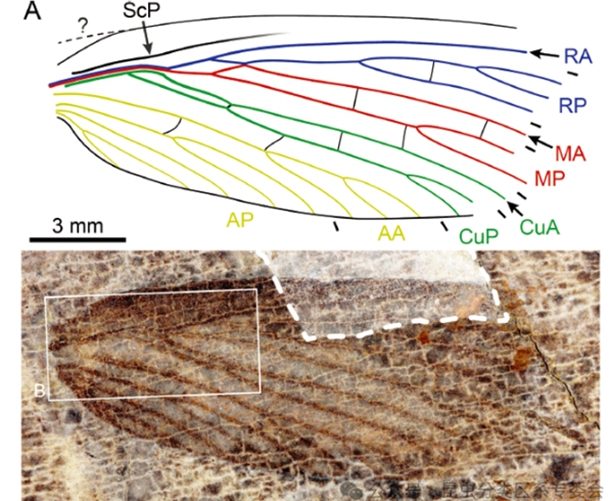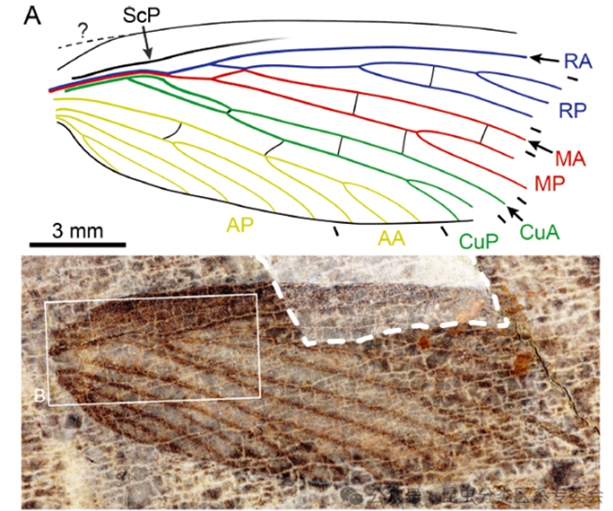
Insect fossil from 300m years ago found in Shanxi

A Permian-era Diaphanopterodea insect fossil, dating back about 300 million years, has been found for the first time in Yangquan, North China's Shanxi Province, according to a report by local newspaper on Monday.
The paper detailing the discovery was recently published in the journal Fossil Record. The discovery represents both the earliest and eastern-most record for the Parelmoidae family, shedding new light on the distribution and diversity of these extinct taxa, reported Yangquan Daily.
The insect was identified from a fossil collected by the Yangquan Planning and Natural Resources Bureau during a field survey in 2022. The specimen, cataloged as YQZYW-15, was studied and confirmed by a research team from the Capital Normal University.
The fossil was found in lake-deposited strata alongside fish fossils and numerous ferns and Cordaitales plant leaves, indicating the insect lived in wetland forests near ancient lakes.
"This discovery fills a significant gap in China's Permian insect record and provides new insights into the global distribution and diversity of these ancient species," said the report.
According to the report, Diaphanopterodea fossils are rare and typically date back to the Carboniferous and Permian periods, around 300 million years ago. These insects fed on plant sap using piercing-sucking mouthparts.
Diaphanopterodea insect fossils are primarily found in Europe, Asia, North America, and South America. Fossil evidence suggests that Diaphanopterodea became extinct during the mass extinction at the end of the Permian period, about 252 million years ago.



